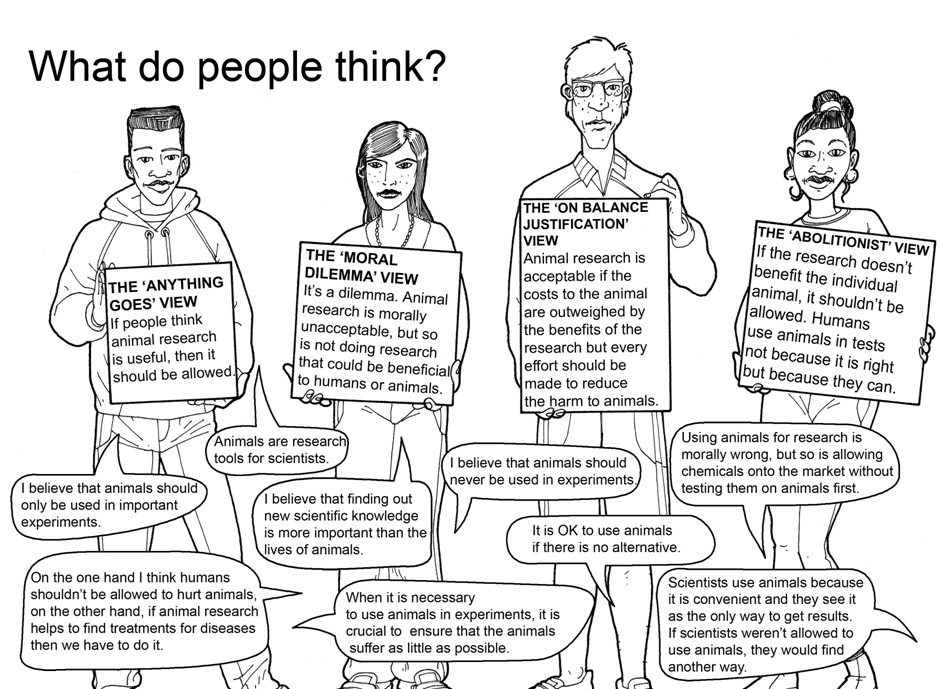Walking out of class on Thursday, I felt two overwhelmingly conflicting emotions: depression from the horrors that I had watched on screen but also an overwhelming sense of relief that the documentary was over and I would not have to watch anymore. The latter, the sense and instinctive drive to ignore the suffering and the horror, is what most concerned me. As David Sztybel comments, “the treatment of animals is a vital topic to debate,” but “it is generally kept not part of the public school curriculum. Out of sight, out of mind – one might say that does is a form of oppression ‘ invisible.’” (283). In high school, we did a small unit on rhetoric freshman year. During this, we had to watch part of the documentary from an animal rights group that displayed some of the things that Earthlings showed. I remember hating having to see the documentary because of the way it made me feel: depressed, insignificant, horrible, wretched. Many people even turn off the Sarah McLachlan commercial on TV because they don’t want to see the truth glaring them in the face. This documentary certainly put that truth front and center for me, and so far I’ve not been able to eat meat or even see people eat meat without feeling sick to my stomach.
The section on animal research made me feel a strong desire to do something about all the atrocity. The repeated scene of the baboons head smashed into that metal to simulate a car accident was horrific. I felt helpless and overwhelmed because I couldn’t do anything about what goes on in scientific laboratories. I felt numb and depressed faced with what those animals go through in the name of science. But again, I also felt conflicted. A huge part of the spinal cord research going on today involves animal experimentation. While one promising study is actually using humans for experimentation by implanting neurostimulator’s inside their bodies, another study used rats by severing the rat spinal cord to insert nerves from a particular part of the brain in the hopes that these specific nerve cells will regenerate the spinal cord. And it worked. Because this issue is so central to my life, I find it very difficult to not find ways to justify this animal research even though I’m sure those rats go to an untold amount of suffering. And yes, I’m sure that this experiment with the rats was not 100% applicable on humankind, but it allowed the scientist to justification and access to be able to start researching humans and his nerve cells which he did and has seen some early success in humans. The desperate longing to be able to use my body and be normal again seems to override my empathy in this instance even though I know it is not right to place my wants above the suffering of others.
Another part of this documentary that I closely related to was when it went into the entertainment industry. Personally, I’ve never been hunting and have no desire to do so. I don’t think that hunting is very sporting as hunters today sit in their little shacks long-distance rifles and wait for animals to approach food or traps that the hunters have laid out. Other forms of hunting have hunters pitting hounds against other creatures and are not themselves using much skill, in my opinion, to track animals. Instead “animals are prey upon by people who are unfairly armed with lures, automatic weapons, and more” (279). As Earthlings says, “hunting is the number one threat to wildlife today… There is no denying it, if hunting is a sport, it is a blood sport” (217).
I also hated and felt much empathy for the animals during the scenes of horse racing and animal exploitation for human enjoyment. As part of the “horse world” for many years, I am all too familiar with the reality of that world. A large portion of the people are concerned only with winning and making money. Horses are easily discarded when riders either move up in skill level that their horse was no longer suitable for or the horses are injured. The documentary states, “like any other business, dog racing and horseracing industry is motivated by a common denominator: profit” (217). I know this to be true firsthand as my own horse, Echo, was a discarded racehorse. Echo was not a very fast horse, at least by track standards. He did not like to run in races as evidenced by his few wins and his trotting across the finish line on multiple occasions. Since he was not going to win anybody any money on the track, he was tossed aside. Fortunately for him, unlike many other thoroughbreds who are simply sent to the slaughter houses, someone decided to take him in to train him to jump on the Florida circuit for money. Again, Echo was no great jumping prodigy, but Echo did enjoy jumping just not 6 foot fences. After being turned out to pasture (because it is cheap to do so), a severely underweight and undertrained version of him found me. This thoroughbred who under more typical circumstances would’ve been killed because he couldn’t run fast enough brought joy and love to my life and became a very valued member of my family.
 |
| Echo |




No comments:
Post a Comment